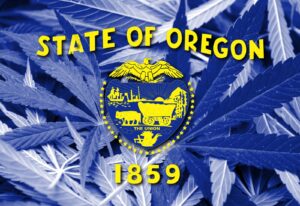 Last week, the Oregon Health Authority (OHA) issued temporary draft rules on marijuana labeling, concentration and testing. The rules are here and here. Like the Oregon Liquor Control Commission’s (OLCC) draft rules issued the same day (for the recreational program), the OHA rules are being promulgated pursuant to House Bill 3400, last summer’s omnibus marijuana law. Unlike the OLCC rules, the OHA rules apply to both retail recreational and medical marijuana items. Below is a high level summary.
Last week, the Oregon Health Authority (OHA) issued temporary draft rules on marijuana labeling, concentration and testing. The rules are here and here. Like the Oregon Liquor Control Commission’s (OLCC) draft rules issued the same day (for the recreational program), the OHA rules are being promulgated pursuant to House Bill 3400, last summer’s omnibus marijuana law. Unlike the OLCC rules, the OHA rules apply to both retail recreational and medical marijuana items. Below is a high level summary.
Oregon Labeling Rules. The labeling requirements are comprehensive and label makers will love them. There are separate requirements for many categories, including plants, seeds, topicals, edibles, concentrates, extracts, uncured and unusable marijuana, and so-called “other products.” There are overarching label requirements and prohibitions as well. Generally speaking, seeds have the fewest labeling requirements, with edibles, extracts and concentrates having the most. Program participants will have to pay very close attention to comply with all of this fine print, which includes things you might expect, like warnings and dates of manufacture, to things you might not, like the amount of carbohydrates, sugar, sodium and total fat in each and every serving. Based on our experience in working with similar labeling requirements in other states, I can tell you that it will take considerable time and effort to achieve compliance with these rules and also that many cannabis businesses will make mistakes along the way.
Oregon Concentration Rules. These are the rules that have really got people talking. The reason is that pot-infused edibles, including drinks, will be capped at five milligrams of THC per serving in the recreational market (with no medical market cap). This recreational limit is half the ten milligram limit in Washington and Colorado. Of course, people have argued that those other states’ limits are too low as well, and simply result in people dosing more than once (and ingesting more carbs/sugar/sodium/fat).
Under the proposed OHA rules, a “container” of solid edibles is limited to 50 milligrams of THC in the recreational market, and 100 milligrams of THC in the medical market. A “container” of liquid edibles is limited to 10 milligrams in both the medical and recreational market. Finally, topicals can have a 90% concentration per container in each market; concentrates and extracts are limited to 1 gram per container in each market; and other products are limited to 100 grams per container in each market.
Oregon Testing Rules. The proposed testing rules are quite technical and contain no real surprises. However, it’s worth noting that the rules “are intended to specify the specific testing that must be done for the various types of marijuana items, rather than to specify which type of licensee or registrant must ensure that the testing is done in accordance with these rules.” That will be left to the OLCC. The testing rules also do not apply to medical growers who are transferring usable marijuana to patients and caregivers, and the rules don’t yet have a start date.
With that said, usable marijuana that will be transferred to consumers would be tested for pesticides, microbiological contaminants, water activity and moisture content, as well as for THC and CBD concentration. Uncured marijuana will be tested for all of these things except water activity and moisture content. Cannabinoid products, except for those applied to skin or hair, would be tested for THC and CBD concentration and homogeneity. (If applied to skin or hair, these products would be tested for THC and CBD concentration, and solvents.)
The rules require marijuana “batches” to be separated into units of no greater than ten pounds, and edibles must be separated into at least twelve whole units that are equivalent to a serving size. Samples would have to be taken only by laboratory personnel in accordance with state lab (ORELAP) approved policy, and the rules give strictures as to how these samples are sourced. If a sample “fails,” the applicant can either destroy the harvest or “process lot” or submit for re-sampling. If a sample fails twice, the harvest of the process lot would be destroyed. The proposed rules allow OHA to randomly audit registrants, and there are possibilities for securing a waiver of the pesticide testing requirements for consistently clean licensees.
So that’s the gist. Unfortunately, there are no public hearings on these temporary rules, but comments will be accepted through this Friday, October 16. You can send those to OHA, care of brittany.a.sande@state.or.us. We expect Ms. Sande will receive a large serving of comments, particularly on the edibles limit. On January 1, 2016, temporary rules for labeling go into effect. It’s unclear when the rules for testing and concentration would take effect. OHA will start a permanent rulemaking process on all of these topics after a trial period, probably next spring.























